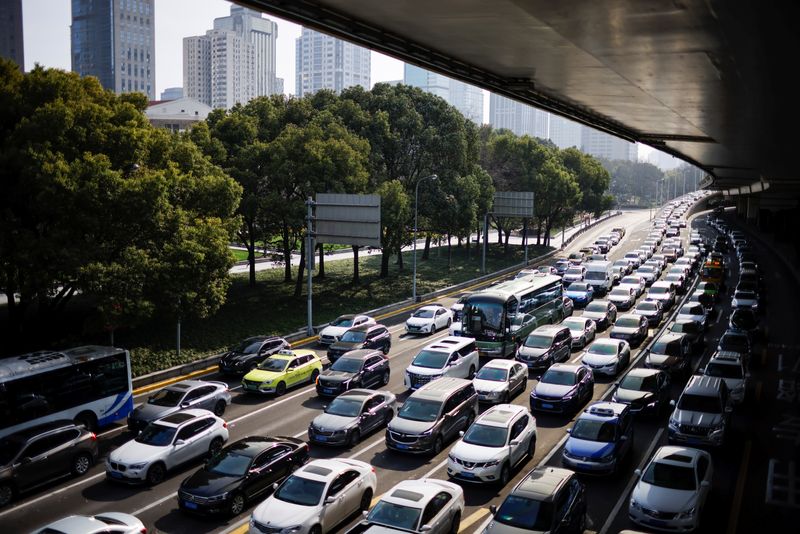BEIJING (Reuters) -China’s passenger vehicle sales rose 4.3% in September from a year earlier, snapping five months of decline with a boost from a government subsidy to encourage trade-ins as part of broader stimulus package.
Sales in the world’s biggest auto market hit 2.13 million vehicles in September, up from 2.04 million a year earlier. For the first nine months of the year, sales were up 1.9% from 2023 levels, according to data from the China Passenger Car Association (CPCA).
Sales of electric vehicles and plug-in hybrids jumped 50.9% and accounted for 52.8% of overall sales. It was the third month in a row that battery-powered vehicles including plug-ins outnumbered sales of gasoline cars in China.
Sales of EVs and plug-in hybrids – a category the Chinese industry group classifies as “new energy vehicles” – hit 1.12 million in September in China and 7.13 million in the first nine months of the year.
Global EV sales have slowed this year with automakers outside China scaling back production plans.
Sales in China, however, have risen, driven by an expanded package of national subsidies for consumers trading in older vehicles for EVs and more fuel-efficient cars – a programme likened to the U.S. “cash-for-clunkers” stimulus in 2009.
Tesla (NASDAQ:) sold over 72,000 vehicles in China’s domestic market, up 66% year-on-year, its best month this year. The company has already announced quarterly global deliveries.
Tesla, which counts on China for about a third of its sales, has added its own incentives, including zero-percent financing in the market.
Chinese EV makers BYD (SZ:), Li Auto (NASDAQ:) and Xpeng (NYSE:) recorded their best-ever month in September.
China’s best-selling new energy vehicle makers through the first eight months were BYD, Geely and Tesla.
SUBSIDIES KICK IN
China’s government announced in July a subsidy of more than $2,800 when consumers scrap an older car to replace it with an EV. The subsidy for a more fuel-efficient combustion vehicle is just over $2,100.
As of late September, 1.1 million consumers had registered to take advantage of the subsidies.
Cui Dongshu, secretary-general of the CPCA, said on Saturday that he expects a strong fourth quarter on trade-in subsidies by local governments.
The government will “significantly increase” debt issuance to boost the world’s second-largest economy, Finance Minister Lan Foan said on Saturday, as it seeks to lift faltering growth back towards its target of around 5%. China’s central bank has announced interest rate cuts and liquidity injections in its largest easing since the COVID-19 pandemic.
An open question is whether China will channel more stimulus to support purchase of EVs, a sector officials have identified as a priority.
The finance ministry plans to issue 1 trillion yuan ($140 billion) of special sovereign debt, using part of the proceeds to increase subsidies for the consumer goods trade-in programme and for business equipment upgrades, Reuters has reported.
China’s car exports grew 22% in September to 3.55 million vehicles over the first nine months of the year, growth that has coinciding with a backlash for Chinese car makers in major overseas markets.
China overtook Japan to become the world’s largest vehicle exporter last year. U.S. officials and others have argued China’s capacity to make more cars than it can sell at home combined with past subsidies give Chinese EV makers an unfair advantage.
The European Union is pressing ahead with tariffs of up to 45% on Chinese-made EVs after a vote last week, a move opposed by Germany. China has said it hopes to avoid tariffs through negotiations that would set minimum EV sales prices in Europe.

The United States and Canada have each set tariffs of 100% on Chinese-made EVs that effectively lock them out of those markets.
($1 = 7.0666 renminbi)